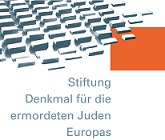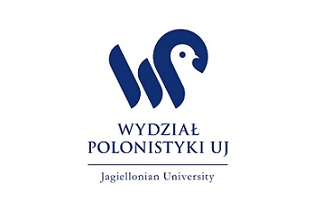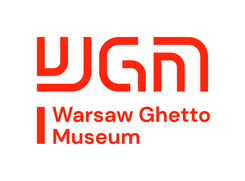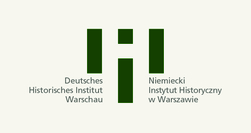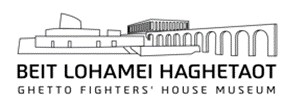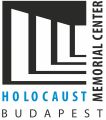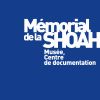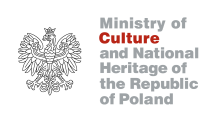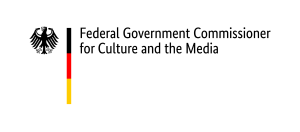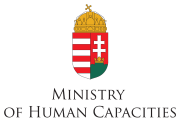The online debate will take place on YouTube on 5 November (Thursday) at 15:00–18:30 CET.
* Please note that all times are indicated according to Warsaw time, i.e. Central European Time (UTC+1:00).
KEYNOTE
Omer Bartov (Brown University, Providence, RI)
Genocide from Below: Rewriting the Holocaust as First-Person Local History
PANEL PRESENTATIONS
Marta Janczewska (The Jewish Historical Institute, Warsaw)
The Ringelblum Archive as a Global Text
Katarzyna Person (Jewish Historical Institute, Warsaw)
Gender-Specific Violence in the Documents of the Ringelblum Archive
Luiza Nader (Academy of Fine Arts, Warsaw)
Testimony as a Witness. Visual Artworks from the Ringelblum Archive
VIDEO PRESENTATION
András Lénárt (Holocaust Memorial Centre, Budapest)
Photography of the Hungarian Labour Service
Chair: Paweł Śpiewak (Jewish Historical Institute, Warsaw)
Commentary: Audrey Kichelewski (Strasbourg University), Roma Sendyka (Jagiellonian University,Krakow)
ABSTRACTS
Omer Bartov
Genocide from Below: Rewriting the Holocaust as First-Person Local History
For more than four hundred years, the Eastern European border town of Buczacz – today part of Ukraine – was home to a highly diverse citizenry. It was here that Poles, Ukrainians, and Jews all lived side by side in relative harmony. Then came World War II, and three years later the entire Jewish population had been murdered by German and Ukrainian police, while Ukrainian nationalists eradicated Polish residents. In this lecture, Omer Bartov (Brown University) discusses his most recent works, including Anatomy of a Genocide: The Life and Death of a Town Called Buczacz (2018) and Voices on War and Genocide (2020), and illuminates how significant individual witnesses from one locality are to the writing of history, particularly of conflict and war. Using primarily diaries and personal letters from eyewitnesses in and around Buczacz – perpetrators, victims, and survivors – he explains how genocide doesn’t occur as is so often portrayed in popular history, with the quick ascent of a vitriolic political leader and the unleashing of military might. It begins in seeming peace, slowly and often unnoticed, as the culmination of pent-up slights and grudges and indignities. The perpetrators aren’t only sociopathic soldiers. They are neighbours and friends and family. They are also middle-aged men who come from elsewhere, often with their wives and children and parents, and settle into a life of bourgeois comfort peppered with bouts of mass murder.
Marta Janczewska
The Ringelblum Archive as a Global Text
The Ringelblum Archivein all their diversity in terms of the genre and topic, they constitute the fundamental material for Holocaust research. The archive, as a collection of texts varied linguistically, genologically, stylistically, thematically and graphically, tells from a different perspective and in different scenes one topic - how the Jewish community in Poland died under Nazi occupation. I will treat this collection as a whole, comprehensive and integral text, and the purpose of the lecture will be to show the principles according to which it was built. The poetics of quotation and the poetics of the fragment, which I recognize as the main principle of the structure of the ARG text, allow me to see its metatextual character and to read the ARG as a text on how to speak about the Holocaust. By juxtaposing highly diverse discourses and topics, always fragmentary and incomplete but emphasizing the individual lot and point of view, the ARG becomes a presentation of how to speak about the Holocaust. It gives a very practical answer to the question of how this should be done — by quoting witnesses testifying about the Holocaust. From this perspective, ARG becomes a magnifying glass, thanks to which we get an approximation of the experience of the Holocaust in our part of Europe - in all Jewish languages and in all oppressive and borderline situations.
Katarzyna Person
Gender specific violence in the documents of the Ringelblum Archive
My paper will discuss gender-specific violence, in particular violence aimed at women, as depicted in the documents contained in the Underground Archive of the Warsaw Ghetto. My aim will be not only to show women as victims of violence, but also discuss their agency and initiative, when facing it and reacting to it. I am in particular interested in women, whose voices until recently were written out of the heroic narrative of Holocaust resistance, even though they were in the front lineof daily chaos and violence on ghetto streets. Among them will be refugees, waitresses in ghetto cafes, street vendors and apartment cleaners. Importantly, their lives will be shown as depicted by other women who were actively resisting Nazi policy: female collaborators of the Ringelblum Archive. These were mainly members of the pre-war intellectual elite: writers, journalists, social activists, women who were prominent participants of the literary milieu of Warsaw and Vilna. This will allow for a multi-layered discussion of women’s experience of daily lives in the Warsaw ghetto and the gendered aspect of decisions undertaken when choosing whose story and which parts of itshould be preserved for “future Jewish historians”.
Luiza Nader
Testimony as a witness. Visual artworks from Ringelblum Archive
My presentation is dedicated to the extraordinary visual artworks from Ringelblum Archive. I will focus primarily on five drawings with commentaries, conceived by the author known as Rozenfeld, reflecting on them within the frame of two other sets of artworks: wide spectrum of drawings by Gela Seksztajn and visual satirical album (created probably by Teofila Reich). Narrative or oral testimonies from the Holocaust and after, possess a long and still expanding history of their complex historical contexts and diverse conceptualisations. I would like to pose questions and shed some light on the specificity of visual artworks from the Shoah: in all possible mediums, forms and materials. Those from Ringelblum Archive, are made by the Jewish witnesses then and there, in the very nucleus of the historical events, enlightening wide diversity of biographical experiences and microhistories and using highly differentiated visual languages. I will state that Rozenfeld, Seksztajn and the author of satirical album produced works that were not only an “eye of history”, an art/ historical document of the Shoah, but also testified to, on and beyond the literal limits of their life, language, imagination, symbolic universe, recognition. On the basis of the analysis of Rozenfeld drawings, in conversation with the ideas of i.a. Elie Wiesel, Lawrence Langer, George Didi Huberman, I would like to differentiate and add one more strata both to the notion of the testimony and the witness. Building on an analysis of Rozefeld logo-visual artworks I will elaborate an intuition of an idea: visual (art’s) testimony as a material witness of Shoah.
András Lénárt
Photography of the Hungarian Labor Service
Although the Holocaust in Hungary has a long historiography and does not lack literary adaptations, we have lagged behind in the analyses of visual representations. Holokausztfoto.hu (https://holokausztfoto.hu/), a portal launched in 2019 on a private initiative, is trying to change this situation. We have no knowledge of photos of antisemitic symbols, street discrimination during the utterly anti-Semitic Horthy era. Anti-semitism was among the motives for persecution against communists or people considered left wing in 1919-20, but the victims of the terror remained unidentified in the photos which were taken in a small number. The impact of the anti-Jewish decrees that became massive from 1938 fundamentally changed the lives of its sufferers, but visible signs of discrimination – as yellow star-bearing, marking houses with the yellow-star, ghettoization and deportation – only appeared after the German occupation of Hungary in spring 1944. Also, from the year between Springer 1944 and liberation in April 1945, very few photos, not more than 1,000 pieces have survived. There is only one exception: the labor service, the forced labor of Jewish men – introduced in 1939. We know relatively many of them, approx. a few thousand pictures and film frames. It is not only the early (between 1939 and 1942) visual documentation of the persecution of Jews that makes them an invaluable resource, but because many of the images attest cheerfulness, or even the honor of physical work. The relatively large number of photos is due to the fact that in these early years, middle-class hobby photographers were able to take their cameras with them and take photos during their service. In good circumstances, one worker could take hundreds of images. We do not know how careful they were, most of the remaining photos show a serene and peaceful vibe. These (sometimes monotonous) sequences of images, can be misleading as they do not represent the difficulties of forced labor and the humiliation of the workers. The problem is that victims and perpetrators are fraternisating in the same picture, yet their antagonistic roles are not obvious. They are cooperating smoothly, even having fun together. Are these images are fake, or were the protagonists, especially the guards, not aware of their oppressing role? Or are the jolly pictures in a similar vein to making victims dig their own graves before shooting them? Without studying the history of the Holocaust we would draw distorted conclusions about the persecution of Jews on the basis of these pictures, so here too it is important to give a narrative and analysis of the photos. In my presentation, I will give an overview of the photos taken during the labor service, and then I will present a series of two photographers, where we also have textual material that provides us a more complex and nuanced understanding of the conditions of the forced labor service.


